Brown v. Board of Education National Historical Park in Topeka, Kansas honors the Supreme Court civil rights decision from 1954.
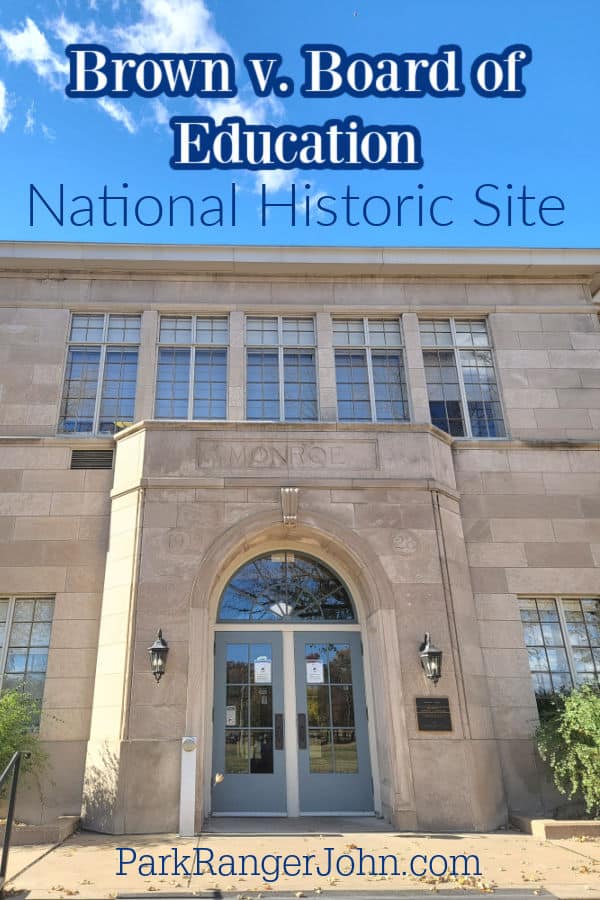
TL;DR Don’t have time to read the full article? Here are my top finds:
🏨Hotels and Vacation Rentals
📍Tours
🐻 Save time! Buy your National Park Pass before your trip
Brown v. Board of Education National Historical Park
Brown V. Board of Education National Historic Site was redesignated as a National Historical Park on May 12, 2022.
The Supreme Court issued a unanimous decision in Oliver Brown et al v the Board of Education of Topeka et al in 1954.
This case included 150 plaintiffs from multiple states. The Supreme Court ruled that schools segregated by race violated the principle of "equal protection" as established by the 14th Amendment.
This case started the process of dismantling educational segregation in the United States. This was a huge landmark decision in the struggle for equality and justice by African Americans.
The case was a combination of five cases from Virginia, Delaware, South Carolina, Kansas, and Washington DC.
The case looks like a single case for an African American girl who was barred from attending an all-white school in Topeka, Kansas but it was combined with cases from the other states.
The legal team was headed by Thurgood Marshall who would later become a Supreme Court justice in 1967.
President George Bush signed the Brown v. Board of Education National Historic Site Act of 1992, establishing a national park at the former Monroe Elementary School site.
The site opened on May 17, 2004, in celebration of the 50th Anniversary of the historic U.S. Supreme Court decision that ended segregation, Brown v. Board of Education.
Monroe Elementary School was a school for African American students in Topeka, Kansas.
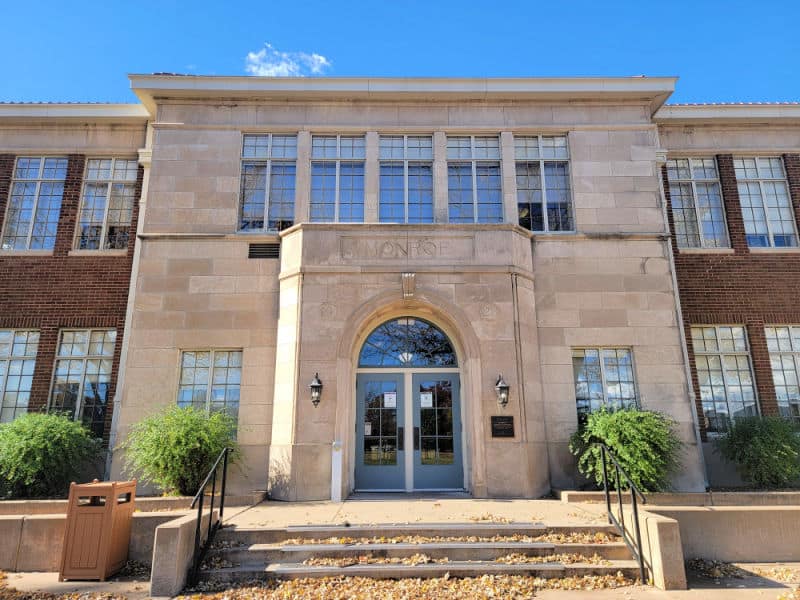
About Brown v. Board of Education National Historic Site
This is a park that you can spend an hour at or spend half a day watching each of the different videos in each classroom and reading all of the interpretive panels.
There is a ton of information available within the park.
Is Brown v. Board of Education NHS worth visiting?
Yes, This National Historic Site does an amazing job of interpreting and explaining not only the Brown V Board decision but other landmark cases in Civil Rights.
We left the park deep in thought and honestly, a bit shook up from some of the displays. The displays truly immerse you in the war on Civil Rights and how non-white people have been treated.
I truly think everyone should visit this park and stand in the interpretive display that includes people yelling racial slurs and discriminating comments.
It shook me to my core and reminded me why we are focused on sharing Civil Rights park sites and the stories of each site.
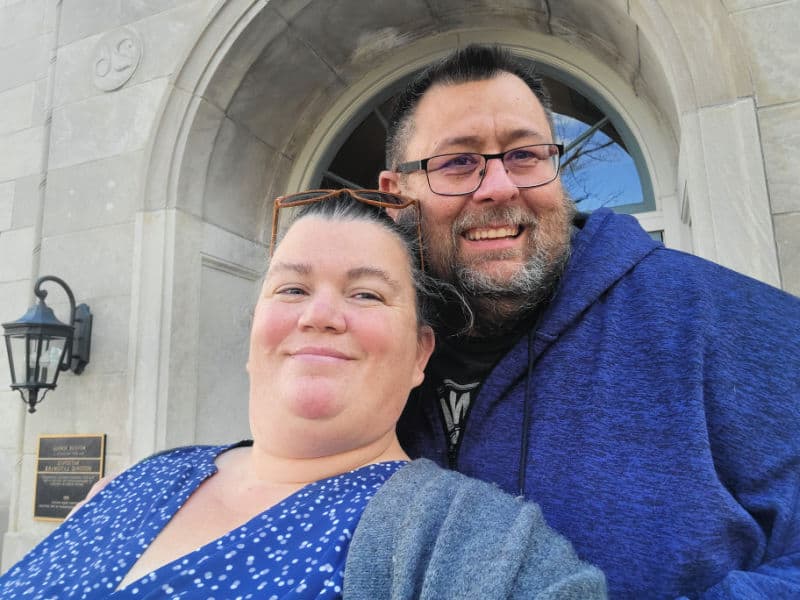
History of Brown v. Board of Education
Brown v. Board of Education ruling was preceded by a span of events leading up to one of the greatest victories in the fight for Civil Rights in America.
The Declaration of Independence was written under the moral that “all men are created equal,” but with the institution of slavery still very prevalent in America, that declaration would not be true for African Americans for many years to come.
After the United States abolished slavery following the Civil War, many states still enacted laws stating it was necessary for black and whites to maintain separate facilities. These were referred to as Jim Crow laws, and most took place in the southern states.
It was in 1892 that the Jim Crow laws were challenged. In that year, an African American man named Homer Plessy refused to give up his seat to a white man on a train in New Orleans.
Louisiana law said that he must. Plessy was arrested. In 1896 his case had made it all the way to the United States Supreme Court which ruled against Plessy by a vote of 8-1.
The National Association for the Advancement of Colored People (NAACP) was created in 1909. This group and many others fought relentlessly to abolish Jim Crow laws in southern states.
Although numerous situations, events, and court cases were fought in the forty years after the start of the NAACP, it was believed it was especially important that African Americans be granted the same public educational liberties that white Americans were afforded.
Charles Hamilton Houston was the legal head of the NAACP. He was partnered with Thurgood Marshall (who eventually would go on to become the first African American Supreme Court Justice).
Cases were brought to court around the country fighting for equal rights in public schools. There were four cases that stood out and paved the way for Brown v. Board of Education:
Murray v. Maryland (1936)
This was a case against the University of Maryland School of Law. Thurgood Marshall fought for Donald Gaines Murray who was rejected from the school because of his color. (Marshall himself was also rejected from the school.)
Missouri ex rel Gaines v. Canada (1938)
Lloyd Gaines was a graduate of Lincoln University (an all-black school) who wished to attend the University of Missouri Law School. The courts ruled in favor of Gaines.
Sweat v. Painter (1950)
Due to its victory in the Gaines case, the NAACP kept fighting cases that were similar. Heman Marion Sweatt applied to the all-white University of Texas Law School but was denied and offered to be admitted to an all-black college instead.
The state did not have an all-black law school, so one was quickly set up due to the case. The court ruled that the all-black school was certainly not at the same level as the all-white school and that Sweat should be immediately admitted to the all-white law school.
McLaurin v. Oklahoma Board of Regents of Higher Education (1950)
In 1949, the University of Oklahoma admitted George McLaurin to its doctoral program. The school, however, forced McLaurin to sit separately during classes and eat at a separate time away from other students.
McLaurin and the NAACP argued that this was absolutely unnecessary, cruel, and unusual treatment of a University student. The court ruled in McLaurin’s favor and ordered the requirements to stop immediately.
Brown v. Board of Education (1954-1955)
After victories surrounding segregation in schools were secured in the south, the NAACP decided to fight further. Brown v. Board of Education was actually the combination of five separate cases – all pertaining to the issue of segregation in public schools.
These cases were: Brown v. Board of Education of Topeka, Briggs v. Elliot, Davis v. Board of Education of Prince Edward County (VA.), Bolling v. Sharpe, and Gebhart v. Ethel. The court consolidated all five cases and referred to them as Brown v. Board of Education.
Thurgood Marshall took on the case and his chief argument was that segregated schools were not equal for blacks and whites because they created a sense of inferiority for black students.
Studies were done on black female students and it was found that there was a great sense of self-esteem issues associated with knowing that they were being segregated because of the color of their skin.
Unable to come to a solution by June, the court decided to reconvene in December 1953. During this time period, Chief Justice Fred Vinson died and was replaced by Gov. Earl Warren.
After the case was revisited in 1953, all the Justices agreed on a unanimous decision declaring segregation in public schools unconstitutional.
On May 14, 1954, the Court, stated that "We conclude that in the field of public education the doctrine of 'separate but equal' has no place. Separate educational facilities are inherently unequal. . ."
Even though it was passed as law, many southern states still secretly battled against the ruling, and in 1955, the Justices enacted a separate ruling (Brown and Brown II) stating that all schools must integrate immediately “with all deliberate speed.”
The actions of the Justices and defense lawyers in these important cases led to the monumental ruling of Brown v. Board of Education and Brown and Brown II which undoubtedly played a crucial role in the fight for Civil Rights in America.
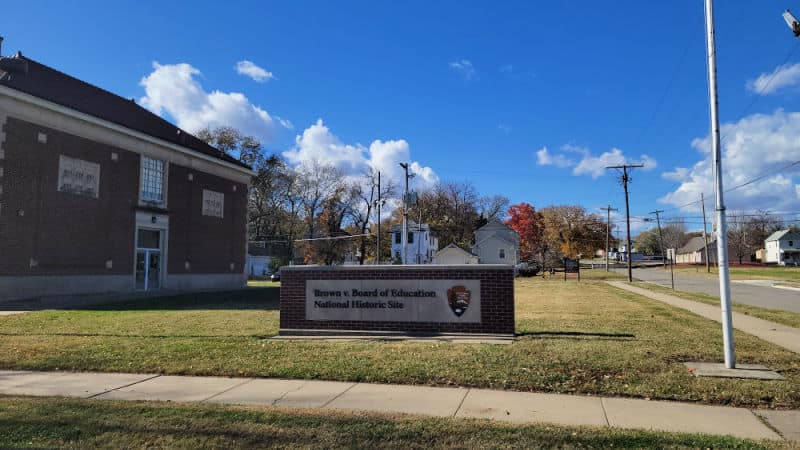
Things to know before your visit to Brown v. Board of Education NHS
Entrance fee
$0.00, There is no fee to visit the park
Learn more about National Park Passes for parks that have an entrance fee.
$80.00 - For the America the Beautiful/National Park Pass. The pass covers entrance fees to all US National Park Sites and over 2,000 Federal Recreation Fee Sites for an entire year and covers everyone in the car for per-vehicle sites and up to 4 adults for per-person sites.

Buy your pass at this link, and REI will donate 10% of pass proceeds to the National Forest Foundation, National Park Foundation, and the U.S. Endowment for Forestry & Communities.
National Park Free Entrance Days -Mark your calendars with the free entrance days the National Park Service offers for US citizens and residents.
Time Zone
CST - Central time zone
Pets
Only service animals are allowed
Cell Service
We had great cell service at the park.
Park Hours
Open Tuesday through Saturday.
The visitor center and gift shop are open from 9:00 a.m-5:00p.m
Closed for Thanksgiving, Christmas, and New Year's Day.
Wi-Fi
Free Wi-Fi is available in the visitor center
Insect Repellent
Insect repellent is always a great idea when outdoors, especially if you are around any body of water.
We use Permethrin Spray on our clothes before our park trips.
Water Bottle
Make sure to bring your own water bottle and plenty of water with you. Plastic water bottles are not sold in the park.
Parking
The visitor parking lot is across the street from the park. It is a short walk to the school entrance.
There is accessible parking available behind the building.
Food/Restaurants
There are no restaurants located within the park.
Gas
There are no gas stations within the park. There are gas stations close by in Topeka, Kansas
Drones
Drones are not permitted to be flown within the National Park Site.
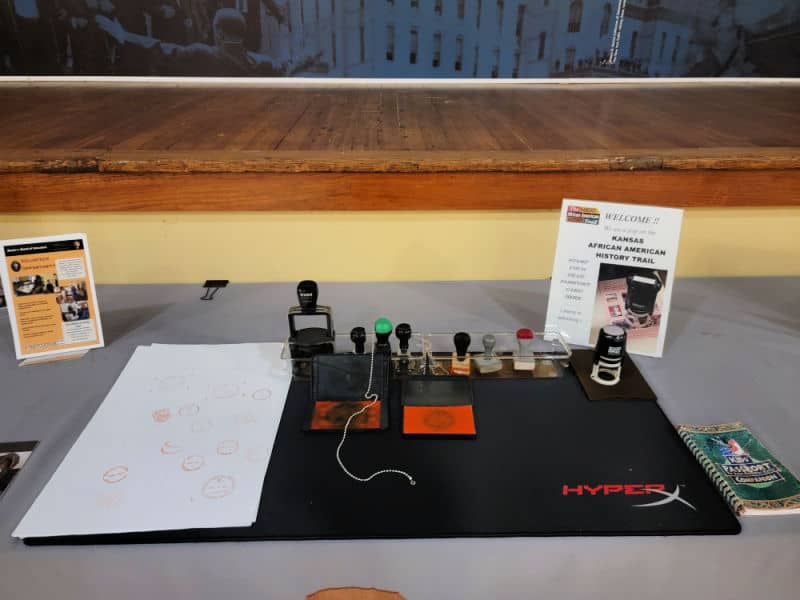
National Park Passport Stamps
National Park Passport stamps can be found in the visitor center. Make sure to bring your National Park Passport Book with you.
The passport stamps were in the large auditorium during our visit instead of in the bookstore.
The park has a couple of different stamps available.
Brown v. Board of Education National Historic Site, Topeka KS
Brown v. Board of Education National Historic Site, American Solar Challenge
Freedom's Frontier NHA, Topeka KS
Passport 25th Anniversary 1986-2011
NPS Centennial 1916-2016
Junior Ranger Stamp
National Underground Railroad Network to Freedom - Constitution Hill
We like to use these circle stickers for park stamps so we don't have to bring our passport book with us on every trip.
Electric Vehicle Charging
The City of Topeka, Kansas has 35 public EV Charging Ports
Details about Brown v. Board of Education NHS
Size - 1.85 acres
Check out how the park compares to other National Parks by Size. Hint it is really small!
Date Established - October 26, 1992
National Park Address
1515 SE Monroe Street
Topeka, KS 66612-1143
National Park Map
This map shows the current displays within the park.
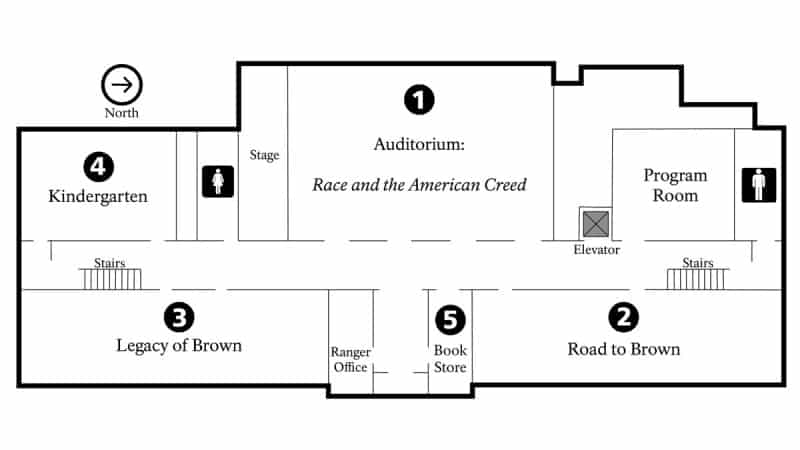
Where is Brown v. Board of Education National Historic Site?
Brown v Board of Education NHS is located in Topeka, Kansas
Estimated distance from major cities nearby
- Kansas City, MO - 64 miles
- Wichita, KS - 138 miles
- Lincoln, NE - 169 miles
- Omaha, NE - 164 miles
- Tulsa, OK - 226 miles
- Oklahoma City, OK - 292 miles
- St. Louis, MO - 309 miles
- Memphis, TN - 506 miles
Estimated Distance from nearby National Park
Mammoth Cave National Park - 601 miles
Gateway Arch National Park - 310 miles
Indiana Dunes National Park - 581 miles
Cuyahoga Valley National Park - 848 miles
Congaree National Park - 1,075 miles
Shenandoah National Park - 1038 miles
Where is the National Park Visitor Center?
The visitor center is located inside the main park building right when you walk in the front door.
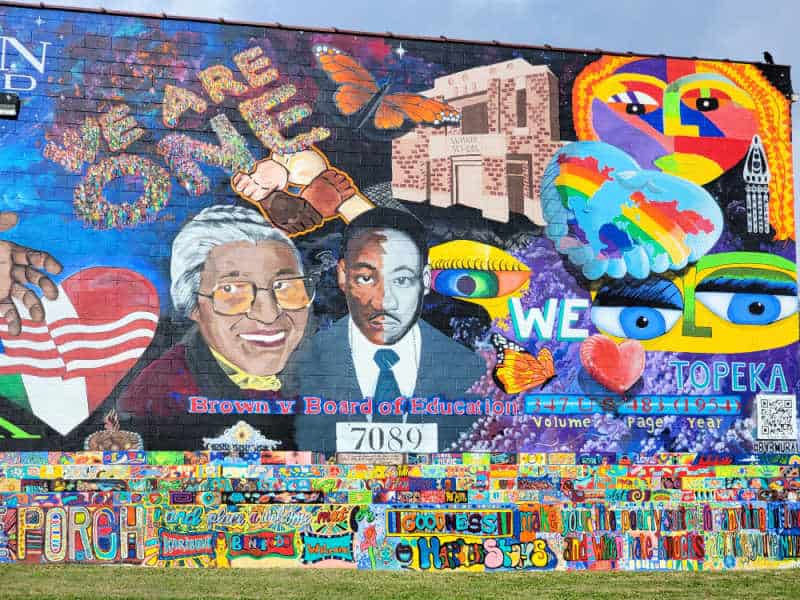
Getting to Brown v. Board of Education NHS
Closest Airports
Forbes Field (FOE)
International Airports
Kansas City International Airport (MCI)
Des Moines International Airport (DSM)
Regional Airport
Salina Municipal Airport (SLN)
Wichita Dwight D. Eisenhower National Airport (ICT)
Lincoln Airport (LNK)
Driving Directions
From the east (Missouri)
From I-70 westbound, take right Exit 362C, 10th Street. Turn left (west) onto 10th Street.
At the next intersection, turn left (south) onto Monroe Street. Turn left (east) onto 17th Street, and then turn left (north) to enter the visitor parking lot.
There is a sidewalk on the south side of the parking lot that will lead you to the site.
From the west (Colorado)
From I-70 eastbound, take right Exit 362B, 8th Street. This exit merges with Monroe Street (south).
Stay on Monroe Street (south), and then turn left (east) onto 17th Street. Turn left (north) to enter the visitor parking lot.
There is a sidewalk on the south side of the parking lot that will lead you to the site.
From the south (Oklahoma)
From I-335 northbound, take right Exit 177, South Topeka. This exit will lead to a toll booth.
Immediately after the toll booth, take right Exit 6, Topeka Boulevard. Turn left (north) onto Topeka Boulevard.
Stay on Topeka Boulevard and then turn right (east) onto 17th Street. Turn left (north) to enter the visitor parking lot.
There is a sidewalk on the south side of the parking lot that will lead you to the site.
From the north (Nebraska):
From US Highway 75 south, merge on to I-70 east. From I-70 eastbound, take right Exit 362B, 8th Street.
This exit merges with Monroe Street (south). Stay on Monroe Street (south), and then turn left (east) onto 17th Street.
Turn left (north) to enter the visitor parking lot. There is a sidewalk on the south side of the parking lot that will lead you to the site.
Best time to visit Brown v. Board of Education NHS
The majority of the park is located inside of the school. Other than possibly having to walk in the rain or snow this is a great park to visit year-round.
Weather and Seasons
Summers are hot and muggy in Topeka, Kansas. While winters are short but super cold.

Best Things to do in Brown v. Board of Education NHS
One of the cool things about visiting Brown v Board of Education NHS is everything is located in one building.
Visitor Center
The visitor center is the park in many ways. When you enter the building there is a small park store and a ranger sitting at a table available to answer any questions you may have.
The park is inside of an old school so exhibits are in different classroom areas. Each classroom has a different focus but they all tie together with a focus on equality.
Auditorium - Race and the American Creed
While at the park you can watch the 30-minute film Race and the American Creed.
One thing to know about the video is it is broken into segments and short stories. You can watch one segment or sit through all of them.
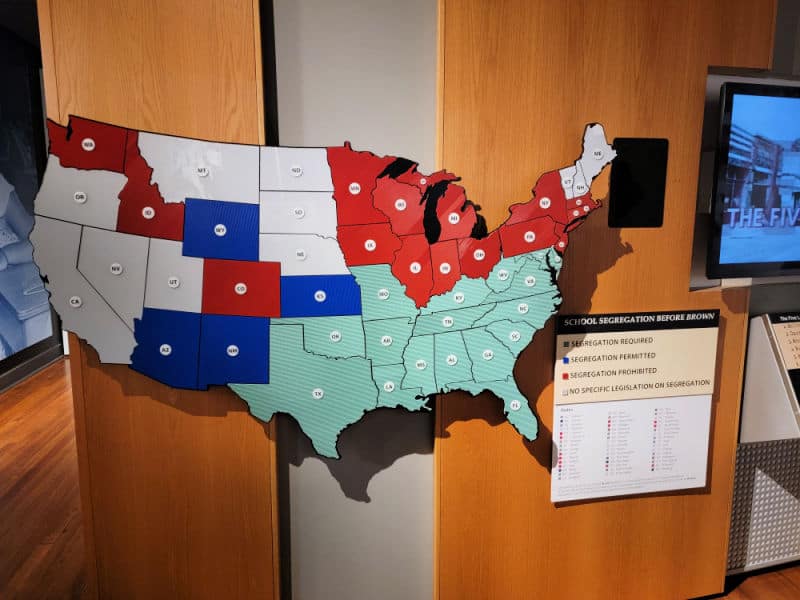
The Road to Brown v Board of Education
This room examines the barriers African Americans faced trying to receive a formal education starting in the early 19th century through the 1954 Supreme Court decision with Brown v. Board.
Learn about why black community leaders fought and took risks to integrate schools.
The exhibit includes photos and displays that combine to really show the hardships due to racial injustice.
There are seven short films and the Hall of Courage.
The Hall of Courage is hard to walk through but everyone should experience this historic footage.
It may be incredibly hard for children. The things that are said are so horrible and will make you pause and think about racial injustice.
The Legacy of Brown v. Board of Education
This exhibit explores the Civil Rights movement that occurred after the Brown V. Board decision.
The exhibits detail the ongoing work being done along with the international impact of the case.
Kindergarten Room
The kindergarten room has been resort to show what it looked like in 1954.
You can step into what it was like to attend kindergarten in the segregated Monroe school during the court case.
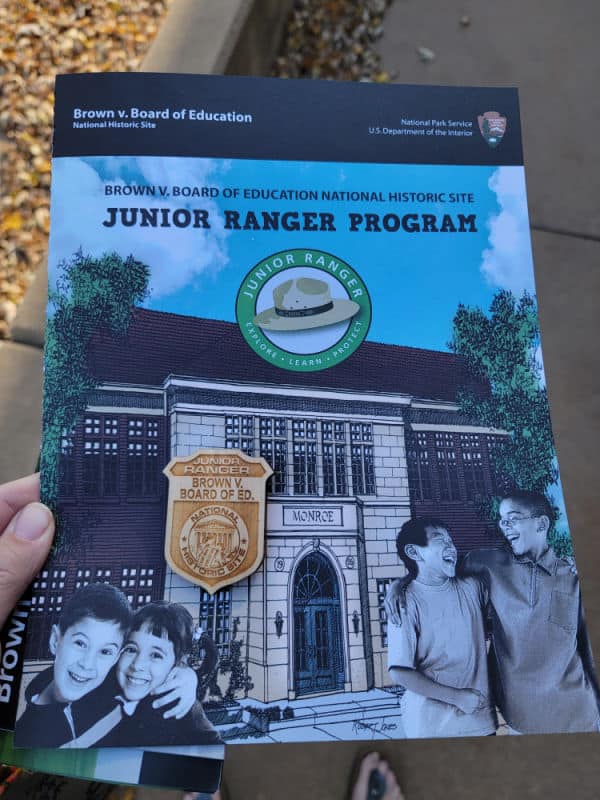
Junior Ranger Program
The Junior Ranger Program can be completed while in the park. It guides you through the different areas of the park.
Bookstore/Gift Shop
Near the front entrance to the park, there is a great bookstore filled with books focused on African American history, civil rights, and the National Park Service.
How to beat the crowds
I am going to guess that running into a crowd at the park is a fairly rare occurrence.
The park receives less than 10,000 visitors a year making it one of the least visited parks in the United States.
Where to stay when visiting Brown v. Board of Education NHS
There are no National Park Lodges within the park.
Hotel Topeka at City Center - take advantage of shopping on site, laundry facilities, and a bar. The onsite restaurant, The Falling Water Grill, features American cuisine. In addition to a 24-hour gym and a business center, guests can connect to free in-room Wi-Fi.
Senate Luxury Suites - free breakfast buffet, dry cleaning/laundry services, and a gym. For some rest and relaxation, visit the hot tub. In addition to a 24-hour business center and a snack bar/deli, guests can connect to free in-room Wi-Fi.
Cyrus Hotel, Topeka, a Tribute Portfolio Hotel - take advantage of a terrace, a firepit, and a coffee shop/café. The onsite restaurant, Fedeli's, features brunch and happy hour. In addition to dry cleaning/laundry services and a bar, guests can connect to free in-room Wi-Fi.
Ramada Hotel & Convention Center - take advantage of a free breakfast buffet, a grocery/convenience store, and a garden. For some rest and relaxation, visit the sauna or the steam room. Free in-room WiFi is available to all guests, along with an arcade/game room and dry cleaning/laundry services.
SpringHill Suites by Marriott Topeka Southwest - take advantage of free breakfast, laundry facilities, and a fireplace in the lobby. Free in-room WiFi and a bar are available to all guests.
Click on the map below to find current rates for hotels and vacation rentals in Topeka, Kansas.
Camping
The park does not have a campground.
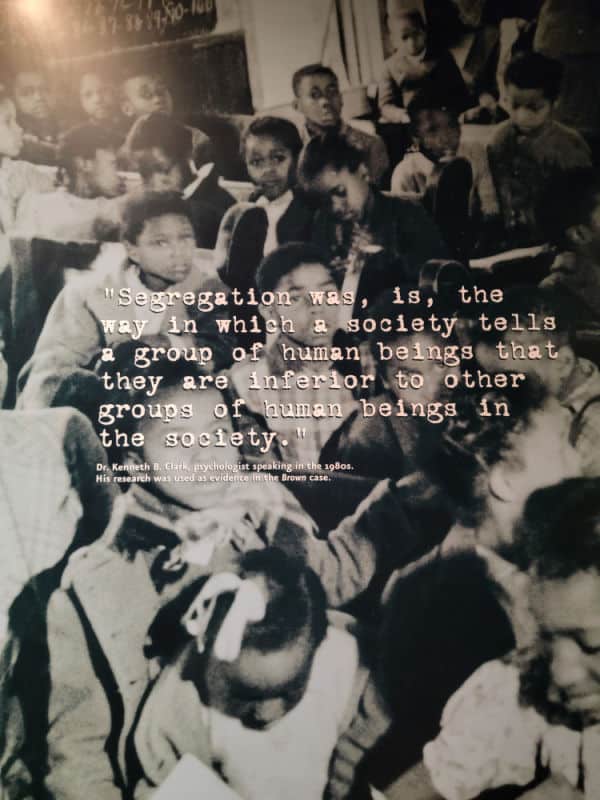
Additional Resources
Brown v. Board of Education: A Brief History with Documents (Bedford Series in History and Culture)
Brown v. Board of Education: A Fight for Simple Justice
Parks near Brown v. Board of Education NHS
Tallgrass Prairie National Preserve
Homestead National Historical Park
Fort Scott National Historic Site
Nicodemus National Historic Site
Harry S Truman National Historic Site
Check out all of the National Parks in Kansas along with neighboring National Parks in Colorado, Missouri National Parks, Nebraska National Parks, and National Parks in Oklahoma
National Park Service Website
Make sure to follow Park Ranger John on Facebook, Instagram, Pinterest, and TikTok

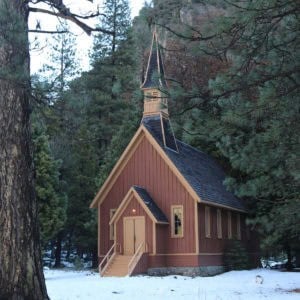
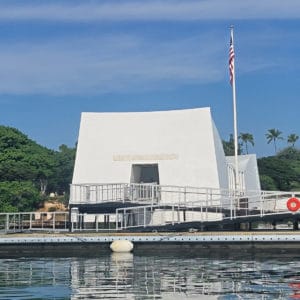


Leave a Reply